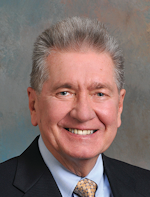This is the first in a two-part article about selling or purchasing a dental or dental specialty practice. In this first article, the elements of a complete sale and purchase are considered. The second part will discuss variations of hiring or becoming an associate with a later sale and purchase, merger, or closure of a practice.
Making the decision to sell or purchase
Traditionally, it has taken approximately two years to make the final decision to sell or purchase a practice. That process was accelerated as a result of the pandemic, and a significant number of dentists are now selling. Interestingly, a surprisingly large percentage of the dentists selling their practices want to continue to work post-sale for one to three years.
However, for most practices, there is insufficient production for a purchaser to meet all financial obligations and continue to employ the former dentist for any period of time other than to transition patients for up to six months or so. If a selling dentist wants to continue to work post-sale, a purchaser candidate that is a dentist-owned practice group with multiple locations should be considered. While the nondentist-owned corporate practices appear to be holding off on purchasing additional practices at this time, specialty practice corporate sales continue.
For purchaser candidates, there are increased opportunities available that were not present prior to the pandemic. However, for the purchaser to obtain financing, the selling owner must return to prepandemic— or almost prepandemic—production, and many practices are doing so. Should outside financing not be available, seller financing may be the only option.
Prior to locating a purchaser, the practice owner should authorize preparation of a confidentiality letter, practice valuation, and letter of intent. Preparation of the sale and purchase agreements can take place after the letter of intent is signed.
Locating a purchaser/practice to purchase
Locating a qualified purchaser candidate or practice acquisition opportunity often involves resources that include a practice broker, the dental equipment and supply company, dental laboratory, professional advertisements, study clubs, dental schools, coverage partners, nearby colleagues, advisors, and existing or former associates. Until the candidate who will purchase the practice is identified, use of any or all of the candidate search tools may be used simultaneously.
If the practice owner cannot locate a candidate, a practice broker may be used to search for and identify candidates. While the practice broker charges a brokerage fee as a percentage of the selling price, the fee can be well worth the cost to locate a purchaser.
For purchaser candidates, some brokers also charge a fee as a percentage of the purchase price. However, purchasers should understand that the broker represents the seller, who pays the majority of the brokerage fee. If the practice owner has identified any purchaser candidates prior to engaging the broker’s services, those candidates should be excluded from any brokerage fee. Listing agreements for brokers typically provide for exclusivity, usually for one year with renewal provisions.
As with any legal agreement, your lawyer should review the listing agreement from the broker prior to signing.
A dental equipment and supply company should have the ability to identify potential candidates, often without any referral fee. While the sales representative for the practice covers only one geographic area, there are other sales representatives and equipment specialists in the company who collectively have beneficial contacts throughout the entire geographic area. State and local professional advertisements, as well as national ads for specialists, can be effective search tools that need not initially identify the practice.
Confidentiality letter
The confidentiality letter should be signed by any potential candidates prior to releasing any confidential or financial information about the practice. The confidentiality letter should provide that if discussions or negotiations between the parties cease without the candidate purchasing the practice, then all confidential information should be returned to the practice owner. However, the candidate is permitted to share any confidential information with the candidate’s advisors.
The practice valuation
The valuation of a practice is usually authorized for preparation and paid for by the practice owner. The purchaser’s CPA should not prepare a second valuation report. It should confirm that the valuation allows the purchaser to reasonably pay him- or herself compensation, pay the purchaser’s operating expenses in the practice, and pay the lenders within a measured period of time.
Should the selling owner and purchasing dentist want to engage the same appraiser to complete the valuation report, the parties should agree on a mechanism should one or the other disagree with the findings. For example, if one party disagrees with the findings, that party would engage a second appraiser with dental valuation experience. If the two appraisals are more than a specified percentage apart, the two appraisers would engage a third dental appraiser whose decision would be final and binding. The payment of the appraisal fees should be allocated in advance and can vary under specified situations.
Some advisors are recommending discounts of the selling and purchase price due to the pandemic. However, if the practice production is near the prepandemic level, such a discount should not be agreed to. For those practices that refuse to open or that have the owner working on a significantly reduced basis, the values are reduced and often contingent upon what the purchaser collects within a year following closing.
Letter of intent
A letter of intent is a written agreement that precedes the preparation of the sale and purchase agreements. Its purpose is to delineate all relevant sale and purchase terms in advance of preparation of the sale and purchase agreements. Some letter of intent provisions include: the sale and purchase price; allocation of the sale and purchase price; the restrictive covenant radius and duration; completion of specialty cases; post-sale employment terms; lease and/or real estate option; or obligation and/or right of first refusal. Incorrect or incomplete letters of intent create disagreements.
With the exception of hiring or becoming an associate with a later sale and purchase, an earnest money deposit is generally inadvisable because a purchaser would then expect that the practice will be removed from the market. A purchaser rarely has the ability to obtain an earnest money deposit sufficient for the practice owner to do so. The earnest money deposit is also contingent upon the occurrence of specified exclusions. If an earnest money deposit is desired, one alternative is to prepare mutual promissory notes in a sum sufficient for the practice owner to take the practice off of the market for a specified time until the purchaser completes due diligence, which typically takes 30 days. If either the purchaser candidate or practice owner does not purchase or sell the practice, the applicable promissory note becomes fully due and payable.
Due diligence
For the purchaser, the purpose of due diligence investigation is to determine whether the purchase should be made and under what circumstances. The due diligence investigation can be thought of as homework by the purchaser and the purchaser’s advisory team to ensure that the purchaser receives what is being paid for.
From the practice owner’s perspective, the due diligence should consider whether the existing patients and/or referral sources will be well served by the purchaser candidate. Reference and background checks with the corresponding releases to obtain them are important. The due diligence for the practice owner becomes heightened if there is any component of seller financing.
For both the purchaser candidate and practice owner, the due diligence investigation is a form of risk management and part of the strategic planning process.
Complete sale and purchase
A complete sale and purchase are simple. Except in very large practices, the practice owner can be paid in cash, and the tax treatment is favorable to both the seller and purchaser because asset treatment is attained. With asset treatment, the purchaser can deduct all assets purchased, and the seller is taxed at primarily capital gains. A possible complexity is for those practices operating as C corporations. These are double taxed unless an argument can be made for the use of personal goodwill, which is taxed at capital gains at one tax level. Advisors should follow the applicable case law.
Typically, a selling dentist works in the practice post-sale for some period of time and for a specified number of hours per week. Generally, the term of the post-sale employment and hours per week should be within the new owner’s control. The former owner may request that the compensation include both a productivity and administrative component. The former owner may also want to include a provision that states that he or she will be scheduled substantially the same as before the sale. The purchasing dentist should review such requests very carefully to ensure that the purchaser will have sufficient production. While the former owner may be asked to be classified as an independent contractor, it is unlikely that he or she will pass Internal Revenue Service, Department of Labor, or state tests to qualify.
Summary and thoughts
Following the guidance in this article will, hopefully, allow the practice owner and purchaser candidate to make the right choices for their futures.
WILLIAM P. PRESCOTT, JD, EMBA, of Wickens Herzer Panza in Avon, Ohio, is a practice transition and tax attorney and former dental equipment and supply manager and representative. His most recent book, Joining and Leaving the Dental Practice, is available through the ADA Center for Professional Success. ADA members can download the e-book for free at success.ada.org/en/practice-management/joining-and-leaving-the-dental-practice. The 4th edition is currently being written and should be available through the ADA in 2021. For Prescott’s other publications, visit prescottdentallaw.com. Contact him at (440) 695-8067 or [email protected].







